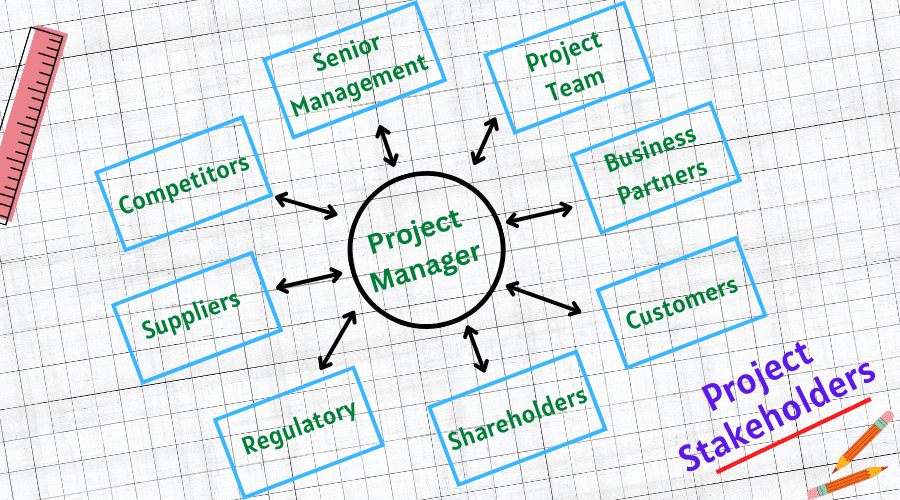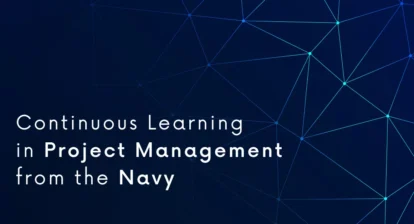About two decades ago, I was working for an IT Services organization. Our company got a re-engineering project from a Fortune 500 company, and I was designated as the project manager.
The client had assigned a “user champion” to walk us through the old system and inform on the requirements. We interacted almost on a daily basis and had a very good working relationship.
The project was sponsored by the finance department of the client’s organization. Our milestones, schedule, and timelines were approved by the project sponsor. In essence, we answered to the finance department.
From a technology perspective, the project was overseen by the client’s IT department. They were responsible for approving our technical design documents and making major technology decisions. The client had assigned an IT manager to help us with handling our technical queries and with integrating our solution with their software.
There were some underlying political currents between finance and IT, and since the project was sponsored by the finance department, the IT department did not want to take any ownership of the project. In fact, the assigned IT manager was not supportive in the beginning at all. This caused initial delays, which did not reflect well on our performance.
Luckily, we realized that this was happening and took preventive measures to overcome the situation.
The IT department was housed in a location about 50 miles away from our base location, but we made it a point to work from there once a week in order to improve our working relationship with the IT manager. We closely interacted with him and tried to understand his point of view. We would pick his brain about the technology stack and ask for his guidance for every technology decision, no matter how small.
The project benefited from our regular interactions with the IT manager and the help he offered. By the end of the project, we became good comrades, and the project was completed successfully.
In this short story, I told you about the three stakeholders: the sponsor, the user champion, and the IT manager. I also introduced you to a fourth stakeholder—the project manager.
A project manager (PM) has a very important role in maintaining the relationships within a project. In my story, you’ll notice how we managed to convert the IT manager from a negative (resistant) stakeholder to a positive (supportive) stakeholder.
Let’s discuss stakeholders in further detail. I’ll be covering who they are and why they are important.
Who are Project Stakeholders?
A project is not a single person’s effort. It is not even a single team’s effort. It requires a collective and collaborative effort from many other people and groups. The PM is in the center, and must regularly interact, collaborate, and work with the involved people and groups. Collectively, these people are called project stakeholders.
As per the PMBOK Guide, a project stakeholder is an individual, group, or organization that may affect, be affected by, or perceive itself to be affected by a decision, activity, or outcome of a project, program, or portfolio.
The project manager’s role is to keep the stakeholders involved and informed throughout the project. It’s essential to get stakeholder buy-in, hold them together, and meet their expectations. This is not an easy task. In fact, it’s sometimes the most difficult task of a project. This is due to different stakeholders having different perspectives, interests, and opinions.
Types of Stakeholders
- Internal vs. External
Internal Stakeholders are people working within a project manager’s organization. Examples include:
- The project sponsor: a person or group providing resources and support for the project, who is accountable for enabling success.
- Functional Groups: departments or groups that are either influenced by decisions of the project team or are involved in completing the project. Some examples include human resources, marketing, sales, legal, finance, operations, manufacturing, etc.
External Stakeholders are people working outside the project manager’s organization. Examples include:
- Customers: individuals who approve and oversee the project’s service, product, or outcome.
- Vendors: businesses that supply services or other resources required to complete some of the project work.
- End users: people or groups who will eventually use the product created by the project.
The project sponsor is different from customer. The sponsor provides funds and resources for the project, whereas the customer (or client) gives requirements.
- Negative vs. Positive
A negative stakeholder is one whose interests are not aligned with the project objective. They believe that they will be negatively impacted by the outcome of the project. They are also referred to as resistant stakeholders.
A positive stakeholder seeks benefits from a project’s success. They believe that they will be positively impacted by the outcome of the project. They are also called supportive stakeholders.
Why are Stakeholders Important?
Projects are governed, managed, and executed by project stakeholders. Projects wouldn’t exist without them. They provide requirements, share knowledge, oversee a project, and contribute resources, as well as do many other things that are essential for completing a project. They are instrumental for a project’s success.
It is essential for project managers, to effectively communicate with the stakeholders and manage their expectations. Project managers should seek their feedback and ensure that they’re satisfied with the results.
The project stakeholders (not including the PM or the project team) are responsible for all of the following project tasks:
- Give authorization to start the project.
- Provide necessary resources to the project.
- Decide project budget and assist with securing project funding.
- Provide project requirements.
- Help with planning.
- Give approvals to Project Team.
- Identify project risks.
- Oversee the project.
This is not an exhaustive list of tasks. A good PM will try to involve stakeholders in as many ways as possible.
Conclusion
Stakeholders are the people or groups of people who are involved, interested, or impacted by the project. They could be internal or external, negative or positive, and/or low in power or high in power.
Identifying stakeholders is a continuous process that runs throughout the entire project timeline. The number of stakeholders can grow as a project progresses. New stakeholders can be identified, and the role of stakeholders can change with time.
Recognizing a stakeholder, understanding their degree of influence on a project, and addressing their needs, demands, and expectations is vital to every project’s success.
As a project manager, you should be aware of interests, expectations, and idiosyncrasies of your project’s stakeholders. You should seek their help by engaging with them and involving them in project activities. If you play your cards well, stakeholders will help you in completing your project successfully. On the other hand, if you fail to handle stakeholders appropriately, your project could be jeopardized.
How do you recognize the importance and influence of a stakeholder? How do you involve influential stakeholders in your project? I would love to hear from you in the comments section below.






